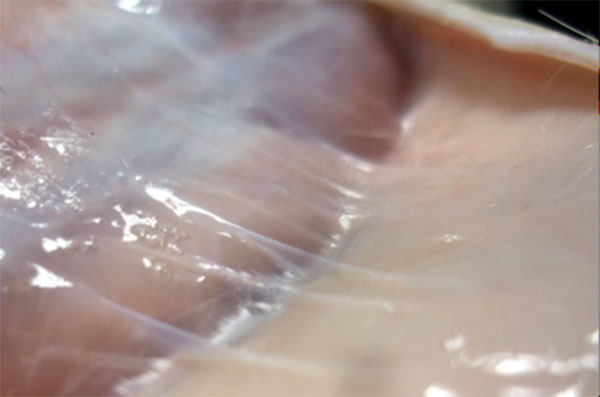Fascia is responsible for deep wound repair

Scar forms quickly after an injury. This rapid formation of fibrotic tissue to patch wounds is a key to our survival, scars prevent infection and bleeding. But in some cases of deep wound, abnormal scarring can occur which can create non-healing chronic wounds or fibrosis. In a study published in the Nature, researchers from Helmholtz Zentrum Munchen in Germany found that fascia has an important role in the formation of scars.
The study found that skin scars originate from a pre-made substance in the subcutaneous fascia. Using experiment on mice, after a deep wound, fascia fibroblasts rise to the skin surface, dragging their surrounding extracellular jelly-like matrix, including embedded blood vessels, macrophages and peripheral nerves, to form the provisional matrix. This “cellular plug” did not require cell division, indicating that the plug was ready-made (prefabricated). The types of fibroblast found in scars can be found more in fascia tissues than on dermal fibroblasts.
The scientists also look at the features of fibres of the protein collagen, which is a component of the extracellular matrix. Collagen fibres in the fascia were more coiled and immature, while in the dermis they were stretched and interwoven. When injured, the extracellular matrix of the fascia moved upwards like a pliable gel into the damaged tissue, to plug and then repair the wound. By contrast, dermal collagen remained immobile.
To understand the effect of this fascia fibroblast, the researchers created deep wound and removed the fibroblasts. In one experiment, they “killed” the fascia fibroblasts using a method called genetic ablation, and found that no matrix was incorporated into the wounds and only abnormal and defective scars were formed. In another experiment, they placed a porous film beneath the skin to prevent fascia fibroblasts from migrating upwards which led to chronic open wounds.
The experiments show that guided homing of fascia initiates the crucial response to external and internal injuries. Fascia contains a specialized prefabricated kit of guarding fibroblasts, embedded within a movable sealant, that preassemble together diverse cell types and matrix components needed to heal wounds.
The findings suggest that chronic and excessive skin wounds may be attributed to the mobility of the fascia matrix. While performed on mice, the authors hope that this understanding can lead to the future of scarless wound healing that can halt the fibrotic response and induce scarless regenerative recovery.
See also https://www.nature.com/articles/d41586-019-03602-4
